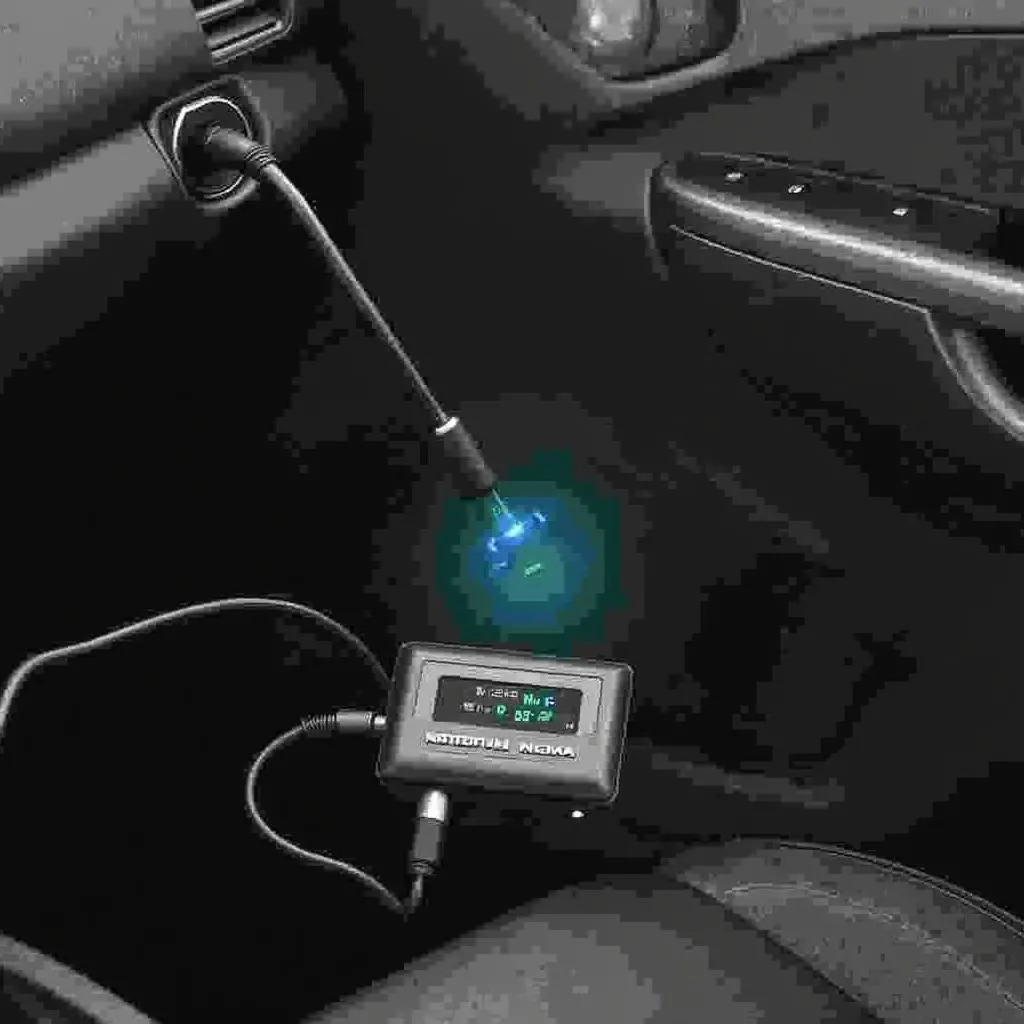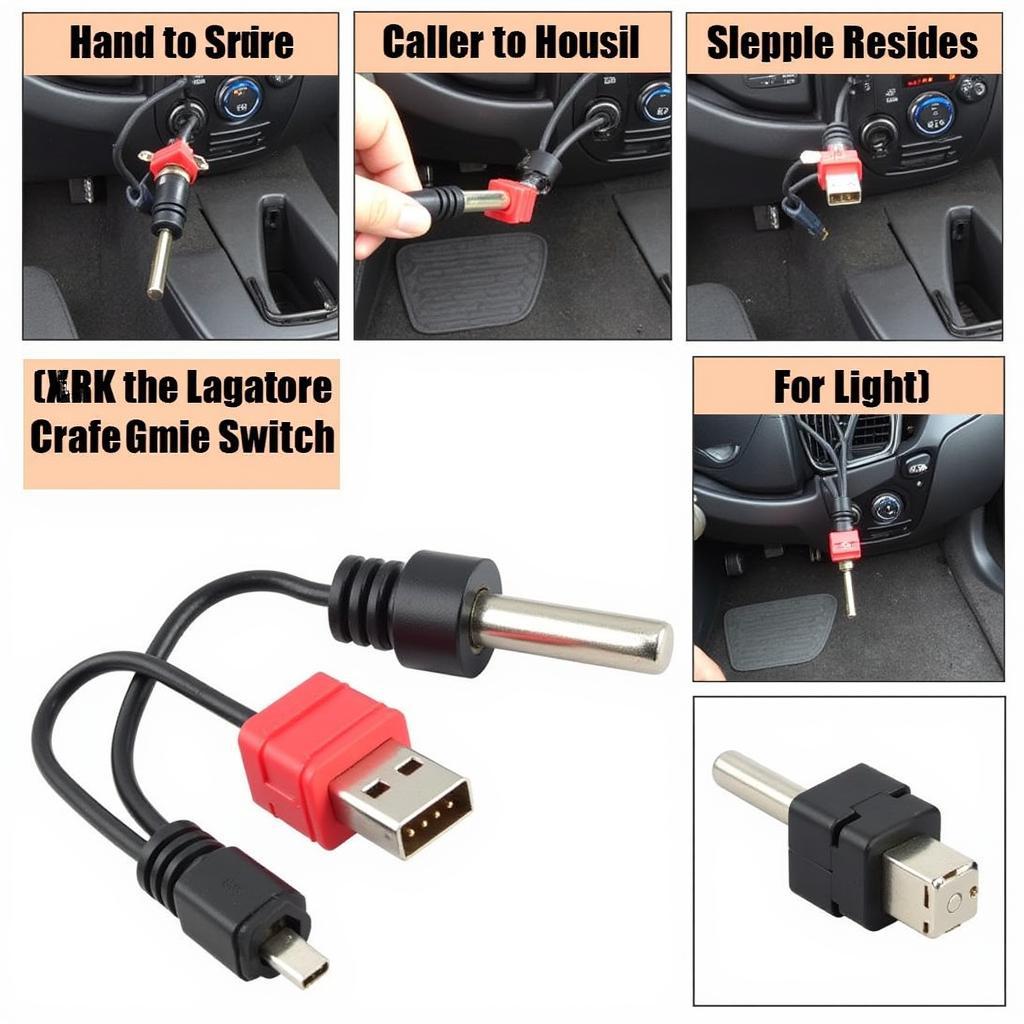The Nissan Qashqai, known for its reliability and comfort, can occasionally throw up unexpected challenges. One such challenge is the persistent illumination of the seat belt warning light, even when all passengers are securely buckled in. This issue, while potentially indicating a minor fault, can be a source of annoyance and distraction for drivers.
This comprehensive guide delves into the common causes behind a malfunctioning Nissan Qashqai seat belt warning light and provides practical solutions to help you address the problem effectively.
Understanding Your Qashqai’s Seat Belt Warning System
The seat belt warning system in your Nissan Qashqai plays a crucial role in ensuring the safety of you and your passengers. It consists of several key components working in unison:
- Seat Belt Buckles: These house sensors that detect when a seat belt is fastened.
- Seat Weight Sensors: Present in some models, these sensors detect the presence of a passenger in a seat.
- Warning Light: Located on the dashboard, this visual indicator alerts you to unfastened seat belts or system malfunctions.
- Audible Chime: Often accompanying the warning light, this sound serves as an additional reminder to fasten seat belts.
When the system detects an unfastened belt or a fault within its components, it triggers the warning light and chime.
Common Causes of a Nissan Qashqai Seat Belt Warning Light Malfunction
While the most frequent reason for the seat belt warning light to activate is an unfastened seat belt, a persistent light even when all belts are buckled can indicate other issues. Here’s a breakdown of common culprits:
1. Faulty Seat Belt Buckle
The most susceptible component to wear and tear is often the buckle itself. Over time, dirt, debris, or damage to the buckle mechanism can hinder the sensor’s ability to detect a fastened belt, triggering a false warning.
2. Damaged Wiring
The wiring connecting the seat belt buckle sensors to the vehicle’s electrical system can become frayed, corroded, or disconnected. This disruption in the electrical circuit can lead to a continuous or intermittent illumination of the warning light.
3. Seat Weight Sensor Malfunction (If Equipped)
Some Qashqai models feature weight sensors in the passenger seats to determine if a seat is occupied and whether the seat belt warning is necessary. A malfunctioning weight sensor can send incorrect signals, causing the warning light to stay on even with an empty seat.
4. Software Glitch
Like any other modern vehicle, the Qashqai relies heavily on software to manage various systems, including the seat belt warning system. A temporary software glitch or outdated software version can disrupt the system’s normal operation.
Troubleshooting and Solutions
Before rushing to a mechanic, there are several troubleshooting steps you can take to potentially identify and resolve the issue:
1. Visual Inspection
Begin by visually inspecting all seat belt buckles for any visible signs of damage, dirt, or debris. Pay close attention to the connection points and the release button mechanism. If you find any dirt or debris, carefully clean the buckle using a soft brush or compressed air.
2. Check the Seat Belt Connections
Ensure that all seat belts, including the front passenger and rear seats, are properly fastened and click securely into their buckles. If you have recently moved any seats or folded down the rear seats, ensure the seat belts are not twisted or caught.
3. Test the Seat Belt Pretensioners
Gently pull on each fastened seat belt to check the pretensioners. You should feel a slight resistance. If a pretensioner feels loose or doesn’t retract properly, it could be faulty and require attention.
4. Inspect the Wiring (If Comfortable)
If you’re comfortable working with basic car electronics, carefully inspect the wiring beneath the seats and near the buckle connections for any loose, damaged, or corroded wires. If you identify any issues, consult a professional mechanic for repair.
5. Software Update
A software update at a Nissan dealership can often rectify software glitches affecting the seat belt warning system. Contact your local dealer to inquire about any available software updates for your Qashqai’s specific year and model.
When to Consult a Professional
If your troubleshooting efforts don’t resolve the issue, it’s crucial to consult a qualified Nissan mechanic or an auto electrician experienced with Nissan vehicles. They have the diagnostic tools and expertise to pinpoint the root cause of the problem, whether it’s a faulty sensor, damaged wiring, or a software-related issue, and provide an effective solution.
Conclusion
The persistent illumination of the seat belt warning light in your Nissan Qashqai, while potentially a minor inconvenience, should not be ignored. By understanding the common causes and following the troubleshooting steps outlined in this guide, you can often identify and address the issue effectively. However, if the problem persists, seeking professional help ensures a safe and enjoyable driving experience in your Qashqai.


